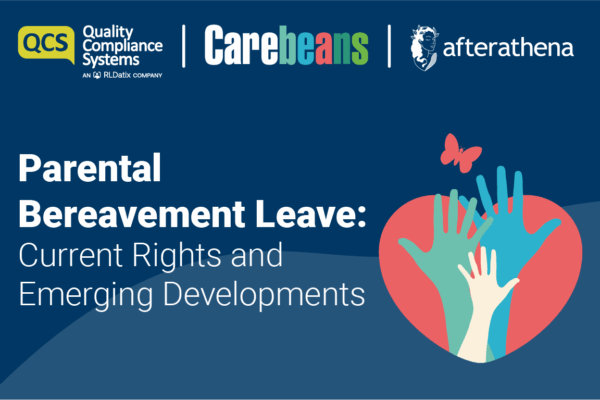Introduction
It is all too clear what can happen if a fire starts in any building, be that an office, care home or a hospital. No stronger was the effects of fire seen, than when with horror and disbelief, we saw on our television screens, on the morning of June 14th , Grenfell Tower engulfed in flames, which started on the 4th floor and rapidly spread to the remaining floors of the 27-storey building. Whilst most of our care homes may not be so tall, though some social care residents may be in high rise blocks of flats, some city office blocks which house social care call centres etc. are more than a few floors high.
This article seeks to focus on the issue of evacuation, dangers overnight, compartmentalisation, fire detection systems, escape plans including PEEPs and liaising with the fire services.
Responsible Person
The Officer Manager, Home Manager, company owners will be the responsible person under The Regulatory Reform (Fire Safety) Order 2005 section 3.
Evacuation
Whilst no one wishes to be involved in a fire, having a clear evacuation plan is vital in getting everyone to a place of safety as quick and as safely as possible. Dependent on your arrangements with the fire authority and the people in the building, there are a number of options:
- A “Stay put” policy is in place within the resident bedroom or a safe haven “place of relative stay”. This may be the preferred option in a care home with vulnerable residents of complex needs and particularly if at night.
- Horizontal evacuation – this is where residents and staff move horizontally behind 2 sets of fire doors away from the fire. This is assessed and should the fire spread then residents are moved again to maintain this distance.
- The “Muster Point” – this is a designated area a safe distance away from the building (at least 8 metres) and would typically be where the fire marshal would co-ordinate the evacuation from.
What do I need to consider?
Any office or home manager needs to consider:
- The type of building and its layout, also remember a fire could start at night
- The people who live and use the building i.e. elderly, frail, dementia, mobility etc.
- Wheelchair access
- Visitors, contractors and family who may be in the building
What measures should be in place?
- A current fire risk assessment and emergency contact numbers
- Fire log book, room list of residents, visitor book etc.
- Trained staff including a fire marshal for each shift (ideally a shift leader)
- A business continuity plan including a safe place if the building cannot be returned too.
- A list of all residents
- PEEP – Personal Emergency Evacuation Plans – these are individual risk assessments (CP04), your dashboard has a template.
- Aids like evacuation chairs/sledges
- Foil blankets – people could be in shock and body resistance low (protect against hyperthermia)
- First aid kits – all shifts must have people trained as workplace first aiders
- Ensure that the fire marshal has a high visibility vest with “Fire Marshal” on – this lets the receiving fire authority know who is coordinating the evacuation
- Communication – it is vital that the fire marshal and any fire warden who assists can communicate either by mobile or walkie-talkie. The fire marshal will need to be able to speak with emergency services in a clear and succinct manner.
How can I be sure resident and staff can evacuate safely?
Some basics will ensure that resident and staff are safe in the event of an evacuation.
- Ensure that sufficient staff are training as fire marshals to cover each shift.
- Ensure ALL staff have basic fire awareness training and that refresher training is completed frequently.
- Have at least 2 fire drills per year during the day and 4 fire drills in the evening so both day and night staff are familiar with fire drill requirement.
- Ensure personal PEEPs are up to date and staff are familiar with individual needs
- All new staff MUST have basic fire awareness training on their first shift – generally part of the new staff induction process
- Always debrief on a fire evacuation and allow staff to share any concerns they have.
- Remember residents live in your place of work – their input into fire safety should not be ignored – they may be aware of issues that in the business of a shift, as a manager, go unnoticed
- Remember the Fire Risk Assessment is a live document and any changes i.e. increased staffing, more vulnerable/ high dependency residents, modifications to the building or general site require an evaluable of the current assessment to ensure that it is fit for purpose
How do I stop a fire?
The most important consideration is personal safety and the safety of others. You can replace a building, you cannot replace people!
- Fire Extinguishers only have a small discharge time, only use if trained to without putting yourself at risk
- Keep all fire doors shut – they are a fire shield with which to contain a fire and stop its spread
- Never open a fire door if the handle is hot!
- If there is smoke in the room you are in, keep low (hands and knees)!
- Turn off any power (gas and electric) supply if safe to do so! Do not put yourself at risk
What if a fire happens at night?
As a fire is not restricted to day or night, evacuation plans have to be carefully considered. At night it is dark outside, most people in a residential unit will be sleeping and will have had their night time medication. Getting everyone out of the building may not necessarily be the best option and the building should be designed to contain a fire within a section of the building within a compartmentalised area.
Compartmentalisation?
All buildings will have areas of compartmentalisation to ensure that a fire in a given area cannot easily spread to another area of the building. Known as a fire shield, this is a material through which penetration takes a significant amount of time to pass giving valuable time for everyone to escape a building or get to a place of relative safety till the fire authority can get people out of the building.
Multi-occupancy buildings i.e. a care home, each resident bedroom is individually compartmentalised i.e. walls, ceiling, floor with access and egress through a fire door. This should be at least 1 hour rated. Other sections of the building will also be compartmentalised i.e. kitchens, offices, laundry room, plant room, boiler house etc.
Compartmentalising allows for the possibility of horizontal evacuation – this is where residents, staff and other people are moved at least 2 compartmented areas away from the fire, generally 2 fire door distances in either direction from where the fire is. This is monitored and if the fire spreads then progressive movement is maintained within the horizontal plan.
Fire detection systems
Following the recent fire in London, there has been much talk about automatic fire detection systems. Managers of some care homes I have spoken to have expressed concern that their fire alarm panel which has zoned areas may need to be replaced! This was also picked up in the recent ‘Ask Sheila’.
Care homes, hospitals and residential units have an L1 system installed throughout the premises which conforms to BS5839-1:2013.
There is a new automatic fire detection system which needs to be fitted on all new multi-occupancy buildings or when replacing your current system. This system works like the nurse on call system in that it pinpoints the room the alarm is raised or activated.
If you are an office manager, home manager and director of a health and social care company you may have received a letter from the fire and rescue service highlighting these changes. The letter draws your attention to the new system, however, currently it is not law that you must immediately replace your current system if it conforms to BS5839-1:2013. This may change in the future thus it is suggested that provision is made, but there is usually a grace period within which it has to be completed.
Show me the legislation!
The main piece of legislation is The Regulatory Reform (Fire Safety) Order 2015 which requires companies to effectively manage their fire safety provision and make an assessment of any significant risk (Fire Risk Assessment).
With regards fire safety equipment Section 13 of the regulations states:
“Where necessary in order to safeguard the safety of relevant persons, the responsible person must ensure that the premises are, to the extent that it is appropriate, equipped with appropriate fire-fighting equipment and with fire detectors and alarms.”
The key word is appropriate thus an appropriate system I would suggest in the vast majority of social care settings is an L1 system which conforms to BS5839-1:2013.
NB: Individual bungalows – sheltered or independent living scheme may not fall into this above category.





